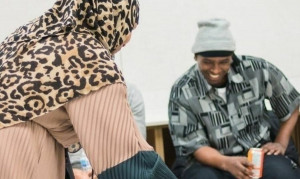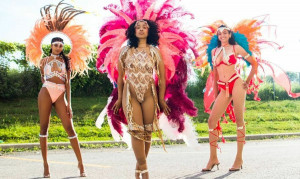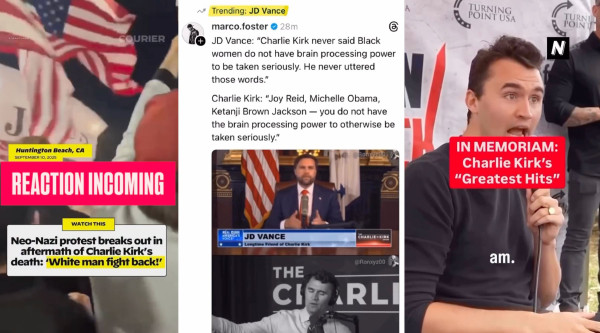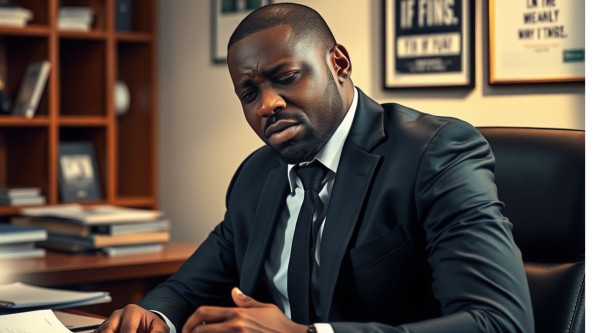Where attitudes of prejudice exist they are readily focused on members of racialized groups who are “visibly distinguishable” on the basis of race, colour or ethnicity. Members of these groups like Blacks, Aboriginal peoples, persons of Middle Eastern descent and South Asians are easy targets for acts of discrimination.
Ken Dryden, former President of the Toronto Maple Leafs and Hockey Hall of Famer, in speaking on the issue of racial taunts in hockey in a 1999 Sports Illustrated article (Soul on Ice) stated that “When you’re mad at somebody, you pick out the most obvious thing about him and abuse him with it. In our worst moments, in the moments we can’t finesse, things come out of us that we were not terribly proud of.…The problem isn’t that people don’t know the words are hurtful. The problem is they know the words are.”
Secondly, the fact is, the people that participate in the playing, organization, operations and management of hockey bring racism and prejudice, which is learned, with them into the sport. This occurs through their erroneous assumptions, prejudicial attitudes, and beliefs about other people. In addition, it happens as a consequence of their actions and behaviors towards those who are different because of their race, colour or ethnic origin.
Generally, racism in hockey involves acts of discrimination, harassment or vilification by players directed at other players; by spectators directed at players; or racist behavior among rival spectator groups, which spill over into disruptions and violence in the stands. It also includes the actions of league and team officials (i.e. executives, managers, administrators, etc.), coaches, game officials (referees), hockey analysts and commentators.
This writer has chronicled numerous alarming racial incidents at all levels of hockey both on and off the ice that have garnered national media attention in Canada and the United States. Below are accounts of some of the incidents to highlight the prevalence of racist attitudes and behaviors.
Professional Hockey
2019 – Jonathan Diaby, a 24 year-old black defenseman playing with the Marquis de Jonquiere of the Ligue Nord-Americaine de Hockey (a Quebec-based semi-professional league) in a game against the Petroliers du Nord, endured racial slurs while sitting in the penalty box. Fans in the stands also harassed Diaby’s father and girlfriend.
2018 – During the Chicago Blackhawks-Washington Capitals game Devante Smith-Pelly of the Capitals, who is black, was sitting in the penalty box when 4 Blackhawk fans began provoking him with chants of “basketball, basketball, basketball”. It clearly inferred Smith-Pelly was playing the wrong sport because of his color. While playing junior hockey, he also heard similar comments.
2010 – While discussing Montreal’s P. K. Subban, NHL analyst Darren Pang painted a picture of the rookie as a young player who is “full of life” and explained that “the more gregarious he got, the more full of life he got, the more everybody wants to settle him down.” Pang stated that Subban should look to St. Louis Blues defenseman Alex Pietrangelo and “may be try to duplicate him.” Pang continued, saying that Pietrangelo “does everything on the ice, off the ice, the white way.” He immediately tried to correct himself by saying he meant “the right way.” Try as he did, the damage had already been done.
Junior Hockey
2019 - Whenever Roshaun Brown-Hall, an 18-year old African American on the Amherst N.Y.’s youth team, touched the puck members of the opposing team from Cheektowaga, N.Y. made monkey sounds and hurled racial slurs at him.
2013 – Selected in the 2012 NHL draft by the Boston Bruins, Malcolm Subban’s selection as a goaltender for Team Canada in the 2013 World Junior Championship in Ufa, Russia generated some hostile public reaction. The player for the OHL’s Belleville Bulls and brother of the Canadiens’ P. K. Subban was the target of racist tweets on social media – “Kay Malcolm Subban’s TRASH. f…ing monkey”, “Team Canada has a black goalie…Wtf is going on here?”, “Subban stick to something your color knows kicking rocks in the plain field in Africa”, etc.
2005 – Coach Ted Nolan of the Moncton Wildcats of the Quebec Major Junior Hockey League (QMJHL), who is of Aboriginal descent, was the victim of racial harassment during a Wildcats road game against the Chicoutimi Saguenéens. Fans in the stands shouted racial slurs at him and directed gestures such as the "tomahawk chop" and shooting a bow and arrow towards him as he stood behind his team’s bench. It did not stop there. Fans continued to taunt Nolan outside the arena after the game as he boarded the team bus with his players.
Minor Hockey
2019 – Divyne Apollon II, a 13-year old African-American member of the Maryland-based Metro Maple Leafs hockey team, was playing in a hockey tournament in Maryland (United States) against a team from Pennsylvania when their players taunted him with monkey sounds. When the team’s coach and referees did nothing, Divyne’s teammates, who heard the taunts, rallied behind him when a fight broke out at the end of the game.
2016 – Hockey parent Al Merali, an Ismaili Muslim, said that his 16-year old son had been subjected to regular racial slurs while playing in the Calgary minor hockey system. He said that his son was called a “brown terrorist” by an opposing player, during a hockey game. According to the father, his son has been subjected for 3 years to such racial slurs as carpet rider, curry master and paki.
2015 - First Nation teenagers in the Regina Minor Hockey League were the targets of racial slurs and taunting during separate hockey games. One of the players was told something like “go back to the rez” and called “a dirty Indian”. In another game, a First Nations player, after delivering a clean body check on an opposing player, was chased, crossed-checked from behind and threatened with the words “I kill you, you stupid Indian.”
Although the incidents may seem like isolated events, taken together, they underscore the magnitude and seriousness of the issue. That said, racism can no longer be downplayed, overlooked or ignored by hockey officials, as there is too much at stake for all parties.
Why the Concern About Racism in Hockey?
Given its complexities, racism in hockey is an issue that is not going away any time soon. It, in fact, will likely increase as more people of colour participate in all levels of the sport. If not addressed at all levels of hockey in a collaborative, more strategic and sustained manner racism could, as noted in the following, have serious and in some cases long-term ramifications in three key areas.
The Players
Racism can have serious consequences for players who experience it. For example, it can humiliate, isolate, exclude and hurt players emotionally, particularly members of racialized groups (Blacks, Aboriginal peoples, persons of Middle Eastern descent and South Asians) who are more often than not the targets of such acts because of their race, color or ethnic origin.
At the very least in hockey, racism exposes them to additional and undue stress that players of colour often experience in their daily lives. It can affect their mental health and well-being and lead to low-self esteem, anxiety, frustration and in some cases even depression. It can shatter their confidence and sense of worth. Not only that, racism in turn, can affect the players’ mind-set, morale, and ultimately undermine their on-ice performance and hockey development.
Local Communities
Hockey continues to play an important social and cultural role in Canada. Moreover, it provides a form of “social glue” which binds communities and people together.
Racial incidents in hockey, however, can have devastating effects on the “social and sporting life of communities” as well as the race relations within and between members of diverse communities. Sadly, such situations have in fact occurred as a result of minor and junior hockey games in Manitoba and Alberta involving Aboriginal and white communities. This disturbing trend could escalate given the passion for hockey in many communities across the country and the ever-increasing emphasis placed on winning by parents, coaches and fans or supporters.
The Sport of Hockey
Needless to say, racism in hockey can, among other things, lead to or result in:
· Unhealthy or toxic hockey environments in which increasing tensions affect players, coaches, parents and team officials. Such situations, if not addressed and resolved effectively, could create a public-relations issue and sully the team or league’s image.
· Difficulties in hockey organizations attracting, recruiting and retaining people of colour, which would not bode well for already fluctuating player registrations.
· Talented players of colour aspiring to play in the NHL deciding instead to consider other professions or career areas thereby affecting the potential “talent pool” from which NHL teams could recruit future players.
· The departure of players of colour from hockey to take up other sports could put hockey’s future and survival at risk.
Notwithstanding the forgoing, if people find their involvement in hockey enjoyable and welcoming then they will be much more likely to continue this sport from childhood into their adult lives. An enjoyable experience increases the chance of lifelong participation be it as a player, coach, administrator, game official or even a fan. Hockey officials and organizations, therefore, need to ensure that the hockey environment is safe and welcoming. Moreover, they need to make sure their policies, programs and practices are inclusive and respond to the changing needs of people of all backgrounds who play the game.
A Call for Action
For this writer, hockey can choose to be affected by racism or hockey can choose to affect racism. If the latter, members of the hockey establishment must first acknowledge the “uncomfortable truth” that racism in hockey exists and is a serious issue that must be addressed head on in a collaborative, holistic and sustained manner. To maintain the status quo and do nothing is not a viable option, if the sport is to grow and survive.
Listed below and divided into what are considered to be the critical areas of focus are a number of practical initiatives or measures that are intended to assist hockey organizations and officials, as appropriate, at all levels of hockey.
1 - Supportive Policies, Practices and Procedures
By all accounts, hockey organizations and their officials are well positioned to make a difference in addressing racism in all areas of hockey by:
· Reviewing and modifying current hockey related policies, guidelines (i.e. codes of conduct or behavior for players, coaches, parents, referees, etc.) to address issues of diversity, racism and racial discrimination.
· Instituting an ongoing review process to ensure that issues of diversity and inclusion are taken into consideration in the planning, development and implementation of new policies, programs, services as well as promotional materials.
· Ensuring, when recruiting and selecting hockey coaches, that they are “the right fit” and possess the personal suitability to coach players from diverse ethnic backgrounds.
· Issuing a statement clearly indicating that league and/or teams will not tolerate racism and spelling out the actions that it will take against supporters or spectators who are caught engaging in racist chanting, carrying signs that contain racist language, inciting racial taunts through offensive gestures, wearing clothes or paraphernalia, which promote or support racism. The statement should be published in all hockey game programs, posted on league and team web sites, and displayed permanently and prominently in the hockey arenas.
2 - Communications, Education and Outreach
Hockey officials and their organizations can help create a safe, more inclusive and welcoming hockey environment by:
· Identifying and using the local ethnic media (print, radio and TV) to disseminate information in the racialized communities on hockey registration, programs and events for youth, the history and general rules of hockey.
· Developing and launching, in partnership with corporate sponsors, a multi-media campaign against racism and racial discrimination with such a slogan as Let’s Blow the Whistle on Racism; Racism in Hockey: Together We Can Check It! or Racism in Hockey: Spot It and Stop It!. The campaign should involve the diversity of hockey players as well as league or team officials to help drive home the importance of addressing the problem.
· Hosting hockey information and registration drives, in partnership with ethnic community organizations or groups, in communities of colour in an effort to attract and recruit players as well as volunteers.
3 - Training and Awareness
Creating and fostering a foundation for positive change in the hockey organization’s culture and environment, through training and awareness initiatives, is critical. Hockey officials and their organizations can achieve this by:
· Providing cross-cultural and/or race-relations training for their coaches, team managers and administrators, referees as well as others in order for them to acquire the knowledge, understanding and skills necessary to deal effectively with issues of diversity, racism and racial discrimination.
· Taking diversity into account when planning, designing, developing and implementing training courses or seminars for coaches, referees, hockey officials (e.g., managers, administrators, etc.).
· Placing or seeking permission to place anti-racism advertisements in the hockey rinks, using the matrix of the rink - the lobby signs, rink boards, score clock, in ice logos or slogans, wall signs or banners, stair risers, near player benches, dressing room areas, Zamboni - to promote anti-racism messages.
4 – Promoting and Celebrating Diversity
Promoting and celebrating diversity is not only desirable, but also essential to the effective inclusion of people of colour in hockey. The failure to do so could have a serious impact on the ability of teams and leagues to attract, recruit and retain players of colour as well as volunteers (e.g., team administrators, coaches, etc.). That being said, hockey officials and their organizations could be more proactive by:
· Establishing or creating newsletters such as Hockey is Diversity that, among other things, include photos and short profiles or stories of players from diverse groups.
· Developing an annual Diversity Hockey Calendar that features photos of players of colour and includes appropriate messages reinforcing diversity and inclusion as well as key dates for hockey events/activities or various religious/cultural holidays and/or observances.
· Utilizing recognized commemorative dates such as Black History Month (February), Asian Heritage Month (May), and Aboriginal Awareness Week (May/June) as ideal opportunities to (a) profile Black, Asian, and Aboriginal or First Nations hockey players and (b) recognize and celebrate the contributions of these groups to the development of hockey, for example, Aboriginal or First Nations peoples (the hockey stick and early forms of hockey like lacrosse/shinny on ice) and Blacks of the Colored Hockey League of the Maritimes (the slap shot and the butterfly style of goaltending). To undertake the latter would help promote the notion that “hockey is diversity” and eliminate the perception or belief that it’s a “white man’s game”.
Food for Thought
For this writer, there is little doubt that the problem of racism in hockey is going to disappear any time soon. As much as anything, it’s likely to increase as more people of colour participate in all levels of hockey. Hence, there is an urgent requirement for a strategic and sustained effort led by the NHL, Hockey Canada and Hockey USA. For them to downplay or ignore the seriousness of the problem and its implications places the long-term future growth of hockey in Canada and the United States at risk.
Hockey organizations like those mentioned above have a key leadership role to play in addressing the issue of racism. They are well positioned to make a difference and be “agents of social change" in the area of racism not only in hockey, but also the broader society. In doing so, they would greatly enhance their profiles in the sport of hockey and communities of colour.
Bob Dawson is a former hockey player, diversity management consultant and a senior writer for Boxscore World Sportswire.
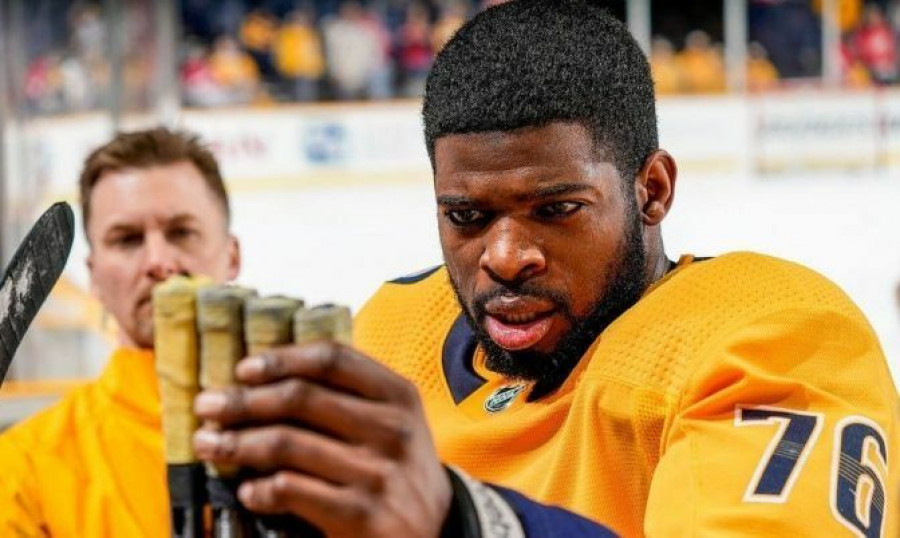
 By Bob Dawson
By Bob Dawson 




